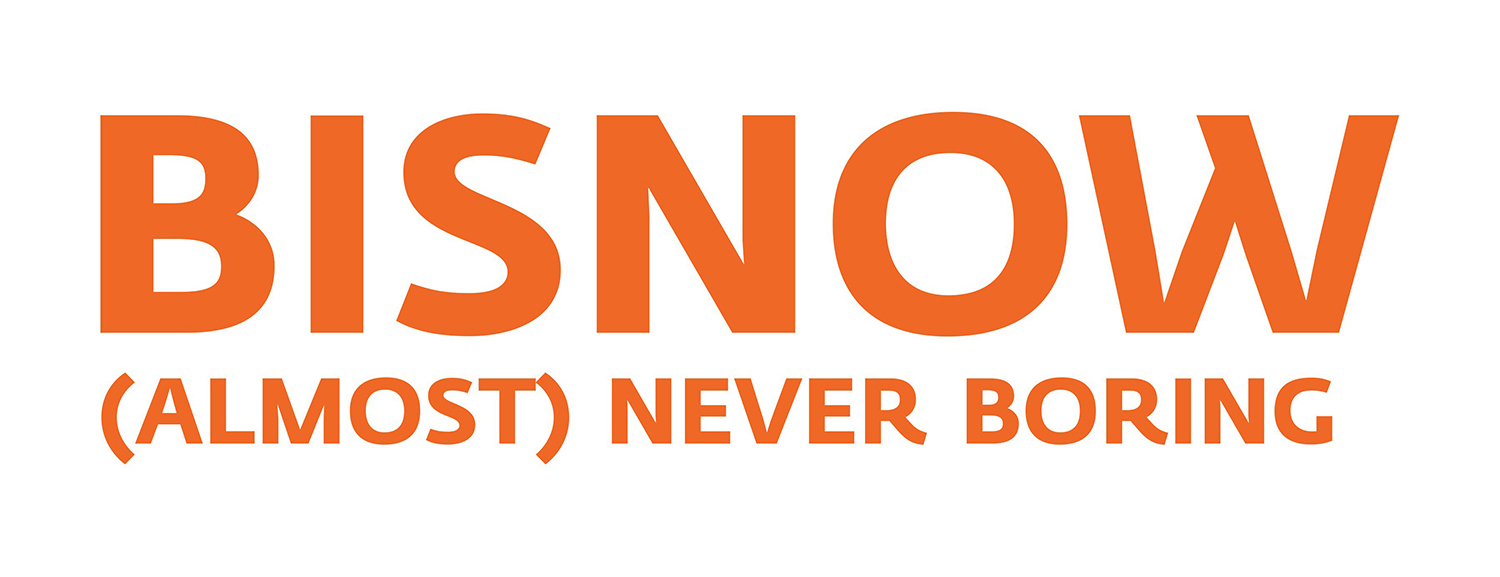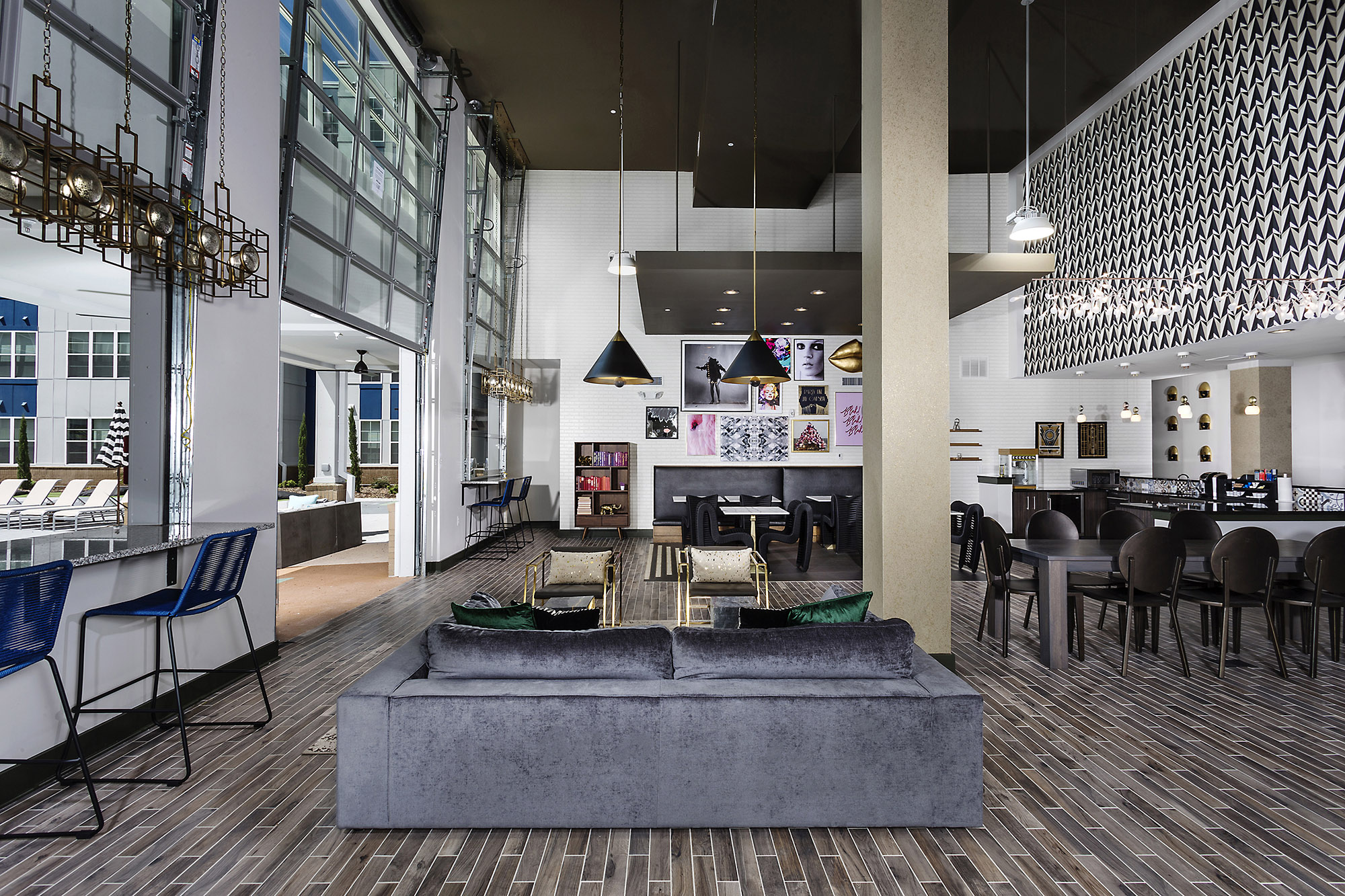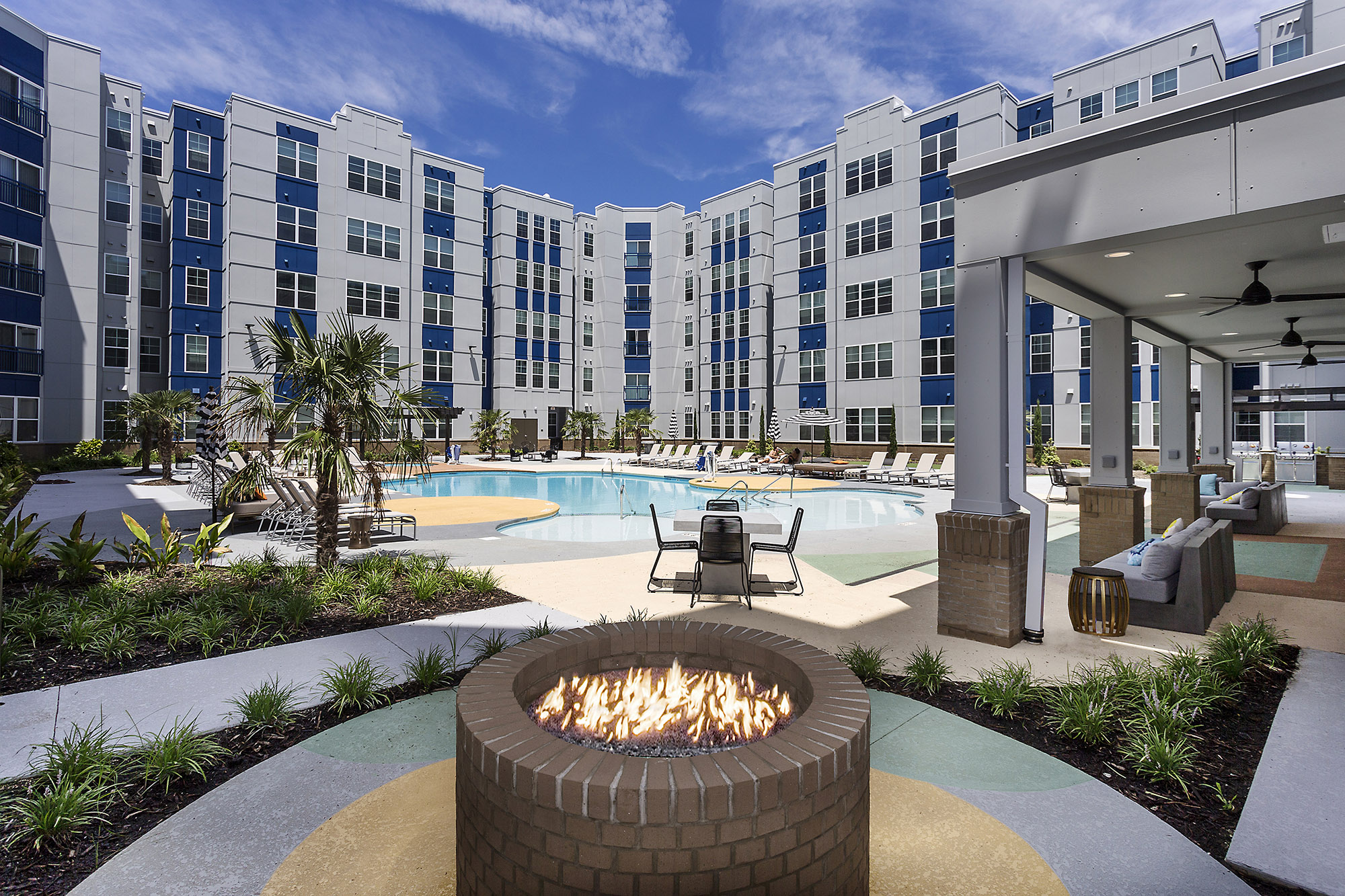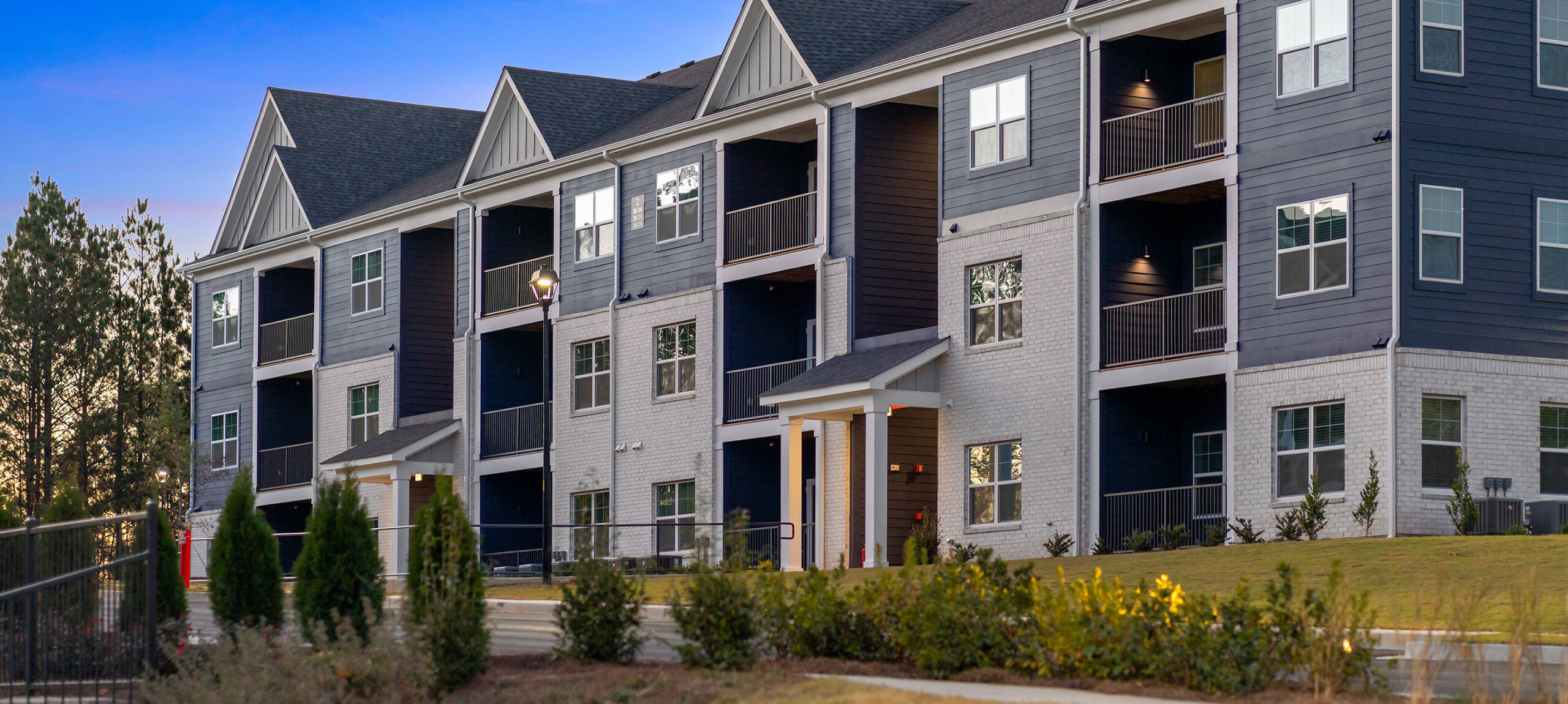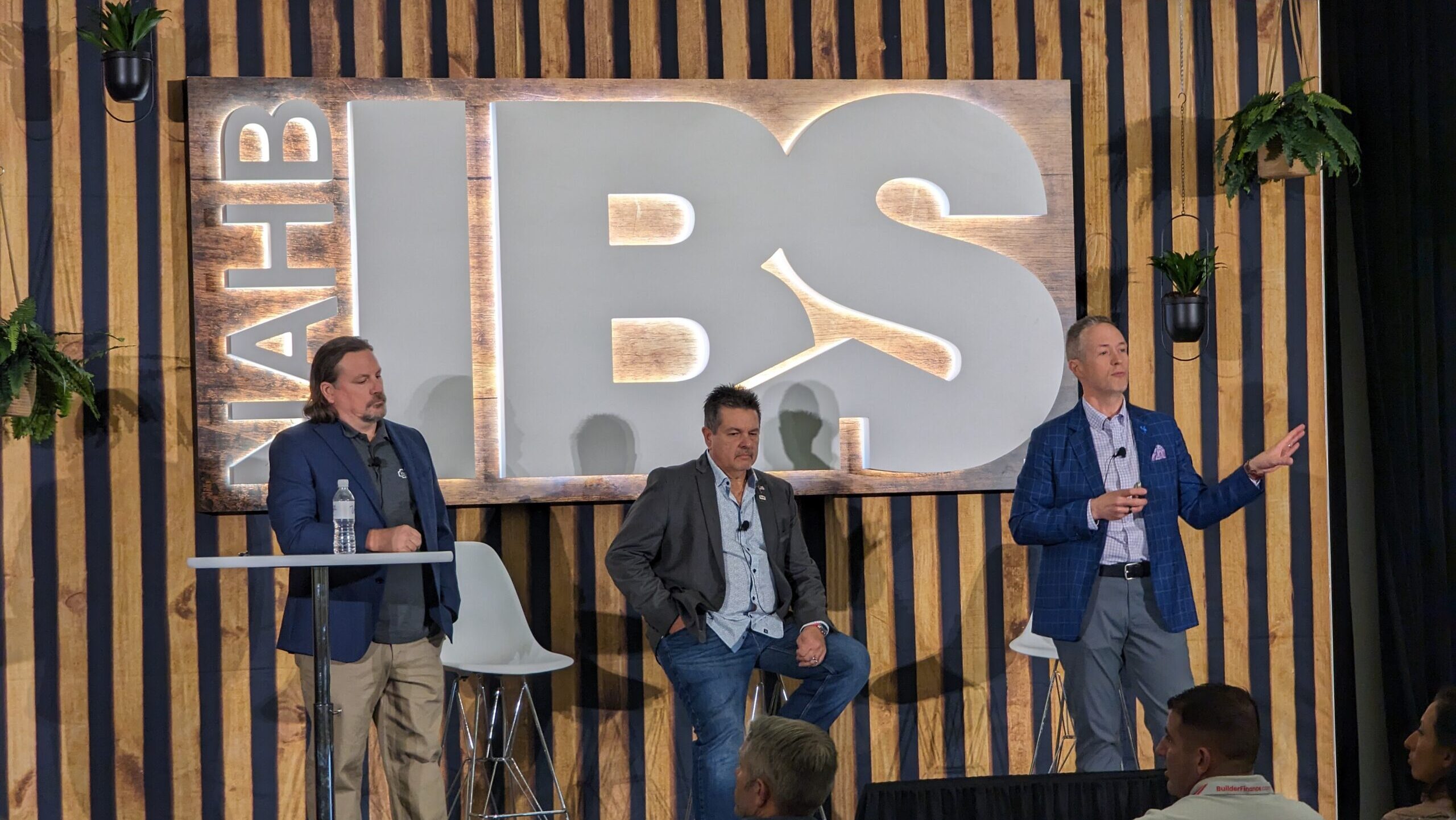Last month, we attended the Bisnow “Charlotte Multifamily Boom!” to network, gather new ideas and share some of our own opinions and expertise. Several hundred industry professionals turned out, and in just a few short hours, they heard tons of great information. Our own Mark Mitchell, Director of Commercial & Hospitality Design, was part of an expert panel, and here’s his recap of their discussion:
Bisnow always hosts a great event, and this one was standing room only. Attendees and panelists alike were engaged and responsive throughout the morning. My panel covered a range of specific questions, starting with a candid conversation about affordability, amenities and construction.
AFFORDABILITY
Data shows Charlotte will need 70,000+ new housing units by 2030, and we’re the top relocation destination for Millennials for the third year in a row. But with single family home sales and prices flattening, multifamily remains strong – as evidenced by ubiquitous construction and a rapidly changing skyline (check out an awesome illustration of these changes courtesy of The Charlotte Agenda in the “Related Articles” list below).
Gentrification in midtown and uptown is a real concern, so the city is pushing affordability in several ways, including the recent approval of 7 affordable housing projects, implementing / updating rules and tripling funding for affordable development (see related articles below). Builders have more incentive to designate a portion (or all) of each project to affordable solutions.
As designers, we must protect the plan elements that make spaces feel good, even when construction cost goals get as low as $60/sq.ft. This means simplifying roof lines, addressing interior finishes, and minimizing or even removing garages. Ultimately, though, the affordable units cannot feel alienated from the rest of the project, or we’ve done a major disservice to their intent.
AMENITIES
The definition of amenity is morphing, and in Charlotte, location has become the top “amenity” promoted by many new developments, especially those within walking distance of restaurants and retail. Apartments in an artistic district are often garnering more interest than projects with stellar but more traditional on-site amenity features. But there’s still plenty of demand for a dynamic rooftop experience where renters can be immersed in that amazing Queen City skyline.
For 55+ buyers and renters, the amenity landscape continues to change, as well. Multi-use spaces are essential, so the traditional dining hall is no longer just for dining. It’s a hearth room, dining room, sun room, and game room all rolled into one, creating a multi-functional social area that encourages resident interaction at all times of the day.
Another simple amenity for seniors is a full bar experience. We’re not talking about a nightclub environment. These bars accommodate coffee service and continental breakfasts, then convert to a lounge feel in the afternoon, complete with sports on TV. Again, this new take on happy hour proves that multi-purpose amenities can enhance the social engagement of residents.
Finally, municipalities continue to support more mixed-use development, and senior housing offers the perfect opportunity to incorporate tenant-supported commercial vendors, like barbers, dentists and eyeglass stores. Our designs must consider the interaction among each of these commercial elements and the residential areas within the building to find balance and ensure resident privacy – while encouraging them to take full advantage of the community within a community we’ve built for them.
CONSTRUCTION TYPES
Multifamily projects are dealing with lengthy delays during the approvals process (for example, 4-months minimum in CA), so developers everywhere are seeking alternate construction methods that have the potential to make up this lost time. Everyone on the panel commented about systems-built options like Katerra, Prescient, SIPS, etc., as the best way to offset delays, which can be a real advantage in the time-sensitive multifamily arena (especially in student housing, where missing a window means waiting a full year).
It’s notable, too, that some general contractors are claiming wood-frame and light gauge metal are now very close in price, which adds a considerable amount of flexibility to a project. My fellow panelist Morris Kaplan said their Concord for-rent townhome project used all modular steel, panelized in South Carolina and erected on site. His experience validated both of our points: That systems-built technologies speed cycle times, and that construction costs for steel can be comparable to wood-frame.
SUMMARY
I love the chance to hear from my colleagues in the industry, and when I can share some of the design innovations we’re using to address challenges, it’s even more rewarding. That’s why I’ll be back at Bisnow’s next Charlotte-area event in June. Check it out here. I hope to see you there!
Related Articles:
Charlotte Growth: Liveability.com
Charlotte Skyline: The Charlotte Agenda
Charlotte Affordable Housing: WSOCTV.com & Governing.com
ABOUT THE AUTHOR
Mark Mitchell
Market Leader – Hospitality and Commercial – Charlotte
Mark is known for his innovative approaches to design and unwavering demand for technical excellence in the delivery and follow-through of project communication.
